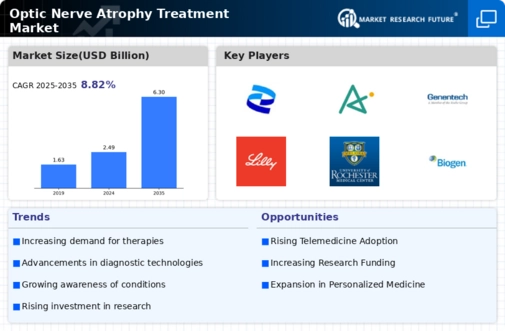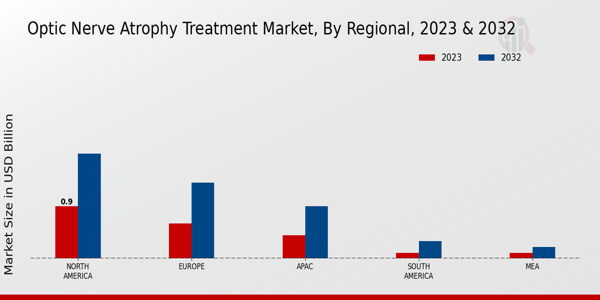Market Growth Projections
Growing Geriatric Population
The global demographic shift towards an aging population is a crucial driver for the Global Optic Nerve Atrophy Treatment Market Industry. Older adults are more susceptible to optic nerve atrophy due to age-related conditions, such as glaucoma and vascular diseases. This demographic trend is expected to increase the demand for effective treatment options. With the geriatric population projected to expand significantly in the coming years, the market is likely to experience substantial growth, aligning with the anticipated market value of 6.3 USD Billion by 2035.
Increased Awareness and Diagnosis
There is a growing awareness of optic nerve atrophy and its implications, which is driving the Global Optic Nerve Atrophy Treatment Market Industry. Enhanced diagnostic techniques, such as optical coherence tomography, facilitate early detection and intervention. This increased awareness among healthcare professionals and patients leads to more individuals seeking treatment, thereby expanding the market. As diagnostic capabilities improve, it is anticipated that the market will continue to grow, with projections indicating a value of 2.49 USD Billion by 2024, reflecting the importance of timely diagnosis in managing optic nerve atrophy.
Government Initiatives and Funding
Government initiatives aimed at improving eye health are significantly influencing the Global Optic Nerve Atrophy Treatment Market Industry. Various health organizations are allocating funds for research and development of new treatments, as well as public health campaigns to educate the population about eye health. These initiatives not only enhance treatment accessibility but also stimulate innovation within the industry. As funding increases, the market is expected to benefit from the development of novel therapies and improved patient outcomes, further contributing to its projected growth.
Rising Prevalence of Eye Disorders
The increasing incidence of eye disorders globally is a primary driver for the Global Optic Nerve Atrophy Treatment Market Industry. Conditions such as glaucoma and diabetic retinopathy contribute significantly to optic nerve damage, leading to atrophy. As populations age, the prevalence of these disorders is expected to rise, with estimates indicating that by 2035, the market could reach 6.3 USD Billion. This trend underscores the urgent need for effective treatment options, thereby propelling market growth and innovation in therapeutic approaches.
Advancements in Treatment Modalities
Recent advancements in treatment modalities are transforming the landscape of the Global Optic Nerve Atrophy Treatment Market Industry. Innovative therapies, including neuroprotective agents and gene therapy, show promise in preserving optic nerve function. For instance, ongoing clinical trials are exploring the efficacy of stem cell therapy, which may offer new hope for patients. As these treatments gain regulatory approval and enter the market, they are likely to attract investment and drive growth, potentially contributing to a compound annual growth rate of 8.81% from 2025 to 2035.























